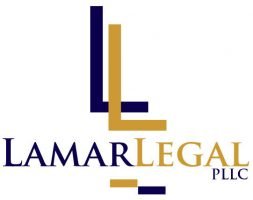
The Corporate Transparency Act (CTA) in 2025: What Businesses Need to Know
The Corporate Transparency Act (CTA) is reshaping the landscape of U.S. corporate governance. Enacted as part of the Anti-Money Laundering Act of 2020 and initially effective from January 1, 2024, the CTA is now significantly impacting businesses in 2025. Its primary objective is to eliminate the anonymity that has long shielded illicit activities by mandating the disclosure of beneficial ownership information.
For every business owner and corporate officer, understanding the implications of the CTA is essential—not only to avoid hefty penalties but also to build a foundation of trust and transparency. This article provides a comprehensive guide on the CTA, exploring its purpose, who is affected, enforcement trends, and best practices for compliance.
What Is the Corporate Transparency Act?
The Corporate Transparency Act (CTA) is a landmark law aimed at combating financial crimes such as money laundering, tax evasion, and terrorist financing. By requiring U.S. businesses to report Beneficial Ownership Information (BOI) to the Financial Crimes Enforcement Network (FinCEN), the CTA seeks to dismantle the veil of secrecy that has allowed shell companies to thrive.
Key Points:
- Purpose: Enhance corporate transparency to prevent the misuse of anonymous companies.
- Scope: Applies to most U.S. corporations, LLCs, and similar entities.
- Enforcement: Administered by FinCEN, with penalties including fines and criminal charges for non-compliance.
Expert Insight: “The increased enforcement measures planned for 2025 signal a turning point in corporate accountability. Businesses must invest in proactive compliance strategies today to mitigate tomorrow’s risks.” – Legal Trends 2025
Who Must File Under the CTA?
While the CTA primarily targets the creation of a transparent corporate environment, its impact is widespread:
Entities Required to File:
- Domestic Businesses: Most corporations, LLCs, and similar entities formed by registering with a U.S. state.
- Foreign Entities: Companies registered to conduct business in the U.S. must also comply.
- Other Business Structures: Limited partnerships (LPs), limited liability partnerships (LLPs), and similar structures.
Entities Exempt from Filing:
Certain entities are exempt from filing, such as:
- Publicly Traded Companies: Already subject to SEC reporting requirements.
- Financial Institutions: Banks and credit unions, regulated under federal laws.
- Large Operating Companies: Those with significant employees, revenue, and a physical U.S. presence.
- Nonprofit Organizations: Specifically those with recognized tax-exempt status (e.g., 501(c)(3)).
Note: Sole proprietorships without an incorporated structure are generally exempt.
The Evolution of Beneficial Ownership Reporting (BOIR)
Although much discussion around the CTA centers on Beneficial Ownership Information Reporting (BOIR), it is important to understand that the CTA encompasses a broader mandate for corporate transparency.
What Is BOI Reporting?
BOI reporting requires businesses to disclose detailed information about their beneficial owners. This includes:
- Full Legal Name
- Date of Birth
- Residential Address
- A Unique Identification Number (e.g., from a driver’s license or passport)
Who Is a Beneficial Owner?
A beneficial owner is an individual who:
- Owns 25% or more of the company, or
- Exercises substantial control over the business operations.
In 2025, expect further refinement of what constitutes “substantial control,” as regulators aim to eliminate ambiguities that have historically complicated compliance.
Compliance Trends and Enforcement in 2025
As we move further into 2025, several trends have emerged in the enforcement of the CTA:
1. Heightened Regulatory Oversight
- Increased Audits: FinCEN, in collaboration with the IRS, is expected to conduct random and targeted audits, especially for businesses with complex ownership structures.
- Interagency Cooperation: Greater collaboration among domestic and international regulatory bodies is anticipated to ensure comprehensive compliance.
2. Digital Transformation in Reporting
- Advanced Reporting Tools: Businesses are increasingly adopting digital platforms to streamline BOI reporting. These tools not only simplify the process but also help ensure accuracy.
- Cybersecurity Emphasis: With the sensitive nature of ownership data, robust cybersecurity measures are essential. Expect stricter standards for data protection.
3. Tougher Penalties
- Civil and Criminal Penalties: Non-compliance can lead to fines of up to $500 per day and even criminal charges, including fines up to $10,000 and imprisonment.
- Proactive Legal Measures: The risk of significant penalties is driving businesses to seek legal counsel proactively.
4. Global Alignment and Future Updates
- International Standards: The CTA is part of a global trend toward transparency, aligning the U.S. with practices seen in the European Union and the United Kingdom.
- Potential Amendments: Legal experts anticipate further regulatory updates that could expand the scope of reporting requirements, especially for multinational entities.
Expert Insight: “As the U.S. aligns with international transparency standards, businesses must not only focus on domestic compliance but also prepare for cross-border regulatory challenges.” – Global Compliance Review, 2025
Best Practices for CTA Compliance
To navigate the evolving regulatory landscape, businesses should adopt the following best practices:
1. Establish a Robust Compliance Framework
- Internal Audits: Regularly review and update ownership records.
- Compliance Teams: Develop dedicated teams or designate compliance officers to monitor CTA requirements.
- Legal Consultation: Engage with corporate attorneys to ensure that all filings meet regulatory standards.
2. Leverage Technology
- Automated Reporting Tools: Invest in digital platforms that streamline the collection and reporting of beneficial ownership information.
- Data Security: Implement state-of-the-art cybersecurity measures to protect sensitive information.
3. Maintain Accurate and Timely Records
- Ongoing Updates: Report any changes in ownership within the required 30-day window.
- Documentation: Keep comprehensive records of all filings and communications with regulatory bodies.
4. Stay Informed on Regulatory Changes
- Monitor Updates: Subscribe to updates from FinCEN, the IRS, and industry associations.
- Training: Ensure that key personnel receive regular training on compliance matters.
5. Prepare for Audits and Enforcement Actions
- Internal Reviews: Conduct regular internal audits to identify and address potential compliance gaps.
- Legal Readiness: Have a clear action plan in case of an audit or investigation.
Additional Resources for Further Learning
For more detailed guidance on Beneficial Ownership Information Reporting and related aspects of the Corporate Transparency Act, consider reviewing the following resources:
-
FinCEN BOI Reporting Portal: https://www.fincen.gov/boi
Access the official guidelines and FAQs directly from FinCEN. -
Corporate Transparency Act FAQs: https://www.fincen.gov/resources
A comprehensive resource for understanding the legal and regulatory nuances of the CTA. -
Small Business Compliance Guides: https://www.sba.gov
The U.S. Small Business Administration offers valuable insights for businesses navigating complex regulatory environments. -
Related Blogs on BOI Reporting:
These resources provide additional context and step-by-step instructions for businesses that need to implement BOI reporting under the CTA.
Embrace Transparency for a Secure Future
The Corporate Transparency Act is a transformative piece of legislation that is redefining corporate governance in the United States. In 2025, businesses across all sectors—from small startups to multinational corporations—must prioritize transparency and compliance to mitigate risks and build a foundation of trust.
By understanding the CTA, implementing robust compliance measures, and leveraging expert guidance, your business can not only avoid significant penalties but also position itself for long-term success in an increasingly transparent global market.
Take Action Now:
Evaluate your current compliance status, update your internal controls, and consult with legal experts to ensure that your business meets all CTA requirements. Remember, proactive compliance today is the key to avoiding costly consequences tomorrow.
Need help navigating the Corporate Transparency Act?
Our experienced legal team is here to support you. Contact us today to review your business’s compliance strategy and secure your future under the new regulatory landscape.
📞 Call: 888.402.4LAW
📧 Email: hello@lamarlegal.com
💼 Schedule a Consultation: Pre Hire Call








